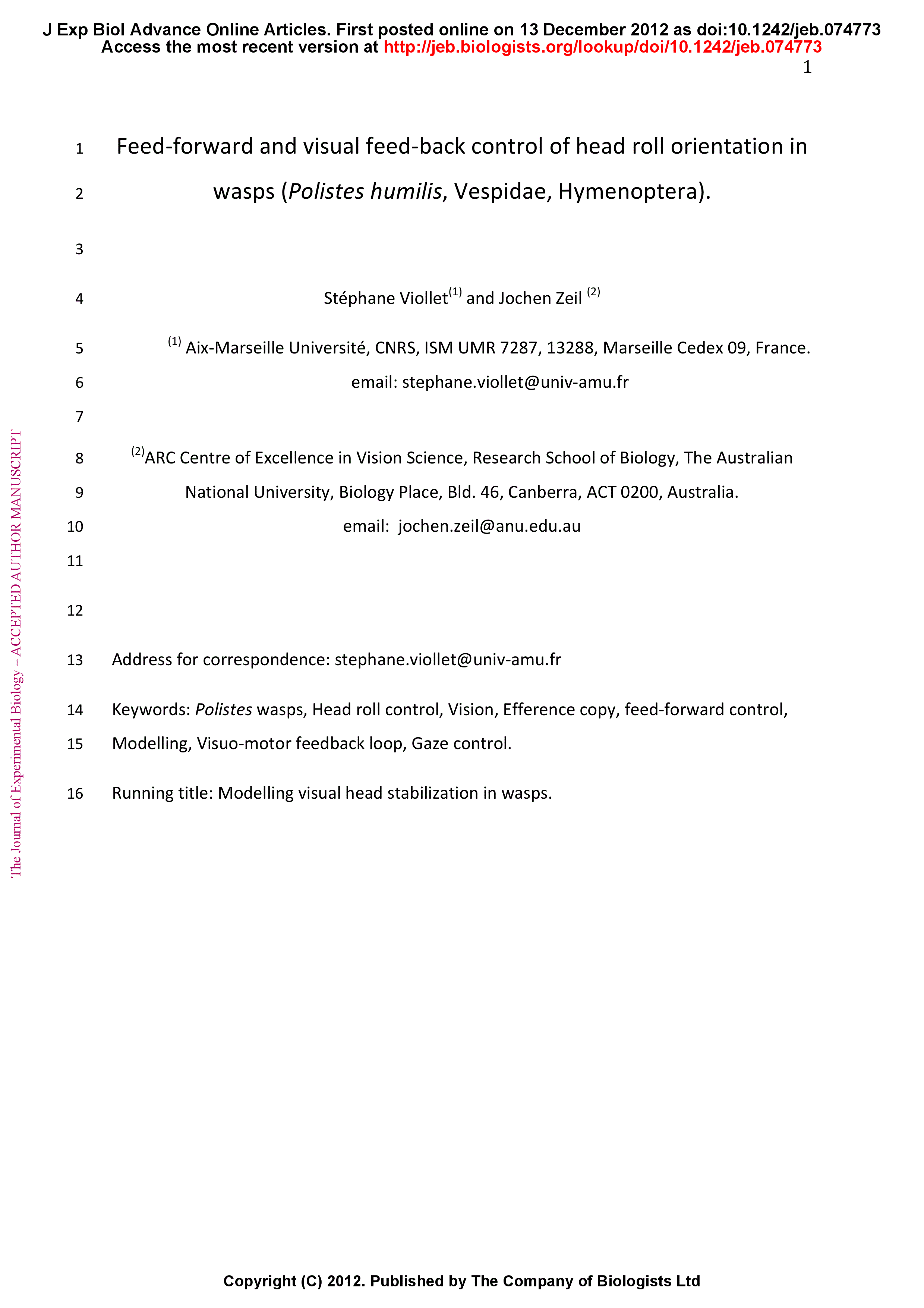Summary
Flying insects keep their visual system horizontally aligned suggesting that gaze stabilization is a crucial first step in flight control. Unlike flies, hymenopteran insects, such as bees and wasps do not have halteres that provide fast, feed-forward angular rate information to stabilize head orientation in the presence of body rotations. We tested whether hymenopteran insects use inertial (mechano-sensory) information to control head orientation from other sources, such as the wings, by applying periodic roll perturbations to male Polistes humilis wasps flying in tether under different visual conditions indoors and in natural outdoor conditions. We oscillated the insects' thorax with frequency modulated sinusoids (chirps) with frequencies increasing from 0.2Hz to 2Hz at a maximal amplitude of 50° peak-to-peak and maximal angular velocity of ±245°/s. We found that head roll stabilization is best outdoors, but completely absent in uniform visual conditions and in darkness. Step responses confirm that compensatory head roll movements are purely visually driven. Modelling step responses indicates that head roll stabilization is achieved by merging information on head angular velocity presumably provided by motion-sensitive with information on head orientation, presumably provided by light level integration across the compound eyes and/or ocelli (dorsal light response). Body roll in free flight reaches amplitudes of ±40° and angular velocities greater than 1000°/s, while head orientation remains horizontal for most of the time to within ±10°. In free flight, we did not find a delay between spontaneous body roll and compensatory head movements and suggest that this is evidence for the contribution of a feed-forward control to head stabilization.








